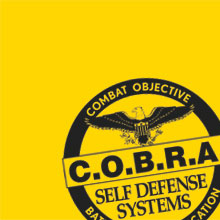
Stun guns are devices that emit an electric shock upon contact with an attacker. When the trigger mechanism of a stun gun is pressed, electricity passes between two metal prongs which supposedly incapacitate the attacker by disrupting the neuromuscular system. The electrical spark between the prongs is visible and makes a distinctive crackling noise.
In theory this sounds like a great self-defense weapon as it provides a visual deterrence and if used it may cause the attacker to become incapacitated.
However, theory and reality are two very different things.
Here are 5 reasons why stun guns may not be as effective as self defense weapons as you may think.
1. Distance
In order for a stun gun to work against an attacker, the victim must be able to put the prongs against the skin of the attacker. This means that the attack must already be in progress and the victim reacts to the attack. This already violates one of the basic rules of self-defense: do not let the attacker get too close to you. If an attacker gets too close to you, the attacker may physically overpower you and you may be too slow to respond.
2. Complicated Operation
Attackers always try to surprise their victims to increase their chances of a successful attack. They control the time, place and method of attack. In other words, criminals decide when the attack is going to happen, where it is going to happen and what is going to happen. This means that the victim will always be reacting to the attack. This means that the victim has to respond to the attack. When responding to an attack, the body prepares itself to fight, freeze or flee by secreting adrenaline. A common side effect is that fine motor skills shut down. Simple things like dialing a number on a cellphone or taking a gun off safety becomes extremely difficult. Most stun guns have a switch that must be activated before the trigger mechanism can be pressed. Some brands even have a safety pin which must be inserted to activate the trigger mechanism. All these actions are very difficult to do during the stress of an attack.
3. Malfunction
Stun guns are electronic devices powered by batteries. Batteries are unreliable. Electronic circuit boards are unreliable. If electronic devices are dropped, they often break. An effective self-defense weapon should be as reliable as possible.
4. A stun gun does not always stop the threat
In a self-defense situation the ideal is to cause maximum injury to the attacker in order to incapacitate the attacker so that the victim can get an opportunity to escape to safety. Most brands of stun guns do not incapacitate the attacker. Most just cause a shock effect and some burning to the skin. An attacker high on adrenaline or under the influence of drugs may not respond to this pain. In fact, pain often infuriates an attacker even more. Relying on scaring the attacker away by means of the visual electric current and crackling noise when the trigger mechanism is pressed is also a flawed tactic. Most violent attackers are not even concerned when you stick a gun into their faces, let alone a stun gun. In fact, they will often laugh at you and continue to approach you challenging you to use the weapon against them.
5. Can be used against you
The fact that a stun gun relies on close proximity of an attacker, creates substantial risk for the victim, especially if the attacker is bigger, stronger, faster and more skilled at violence than the victim – which is almost always the case. Closing the gap between victim and attacker means that the attacker can trap the arm of the victim or even punch or stab the victim before the stun gun can be used. A bigger and stronger attacker can also take away the stun gun from the victim and use the stun gun against the victim.
Conclusion
Having considered all the facts above, is it thus worthwhile to own a stun gun? My personal opinion is that if you want a less than lethal weapon, there are far better alternatives available. Having said that, if you do own a stun gun, it is important to know and understand its limitations and risk plus you have to regularly train with it so that you are able to use it under stress. This is where scenario training comes in. Scenario training is training where you are placed in a simulated real-life situation where you have to use a technique or weapon under duress.

